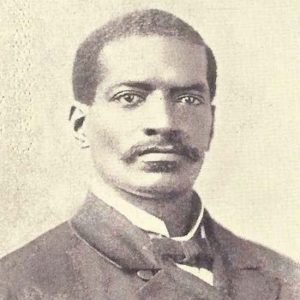
John Batham Vashon
*The birth of John Bathan Vashon in 1792 is celebrated on this date. He was a Black seaman, businessman, and abolitionist.
Vashon was born free in Norfolk, Va., the Mulatto son of George Vashon, a White slaveholder’s son, and a family slave named Fanny. As a young man, Vashon was among the many Black soldiers fighting in the War of 1812. After the war, at the age of 20, he became a seaman aboard the warship U.S.S. Revenge. During the battle with the British off the coast of Brazil, Vashon was captured and held prisoner for two years. His freedom was secured in exchange for a British soldier. Vashon returned to Leesburg, Virginia, where he met and married Anne Smith.
In 1822, Vashon moved his wife and daughter, Mary Frances, to Carlisle, Pa., where he opened a successful public saloon and a livery stable. It was there where Vashon’s son, George, was born. In 1829, the Vashon family relocated to Pittsburgh. Vashon was a successful barber, landowner, and proprietor of Pittsburgh’s first bathhouse on Third Street between Market and Ferry Streets. Clienteles included White men and women during the day; at night, it was a station for slaves traveling the Underground Railroad. Vashon was a trustee of the African Methodist Episcopal Church and co-founder 1832 of the Pittsburgh African Education Society.
In 1833, Vashon organized and hosted the first meeting of the Pittsburgh Anti-Slavery Society in his home. In 1841, Vashon actively participated in the Proceedings of the State Convention of the Colored Freemen of Pennsylvania, held in Pittsburgh from August 23 to 25. A strong supporter of the early abolitionist journals, Vashon was a financial supporter and agent for William Lloyd Garrison’s The Liberator.
One of the wealthiest Black men in Pittsburgh, Vashon 1850, and colleagues purchased the freedom of one of his barber apprentices, George White, who was threatened with recapture by individuals who entered Vashon’s shop and recognized the youth. Vashon, afterward, took the young man into his home.
Vashon raised his son, George, and his daughter, Mary Frances, in the abolitionist tradition. He spared no expense on their education, sending George to Oberlin College and Mary Frances to the Female Academy of Miss Sarah M. Douglass in Philadelphia. Mary Frances placed ads in Martin Delany’s The Mystery newspaper in 1846, advertising lessons in the art of raised embroidery. She also wrote for antislavery newspapers under the pseudonym of Fanny Homewood, using the first name of her father’s mother. John Vashon’s brother, Halson, also resided in Pittsburgh and joined his brother in the anti-slavery crusade.
On December 29, 1853, John Vashon, en route as a delegate to the National Convention of Veterans of the War of 1812, collapsed and died in a Pittsburgh train station of heart failure. An editorial reported: “He fell with his harness on and died in the last act of service to his brethren and in obedience to the summons of his country.”
The University of Pittsburgh,
Pittsburgh, PA 15260,
Phone: 412-624-4141